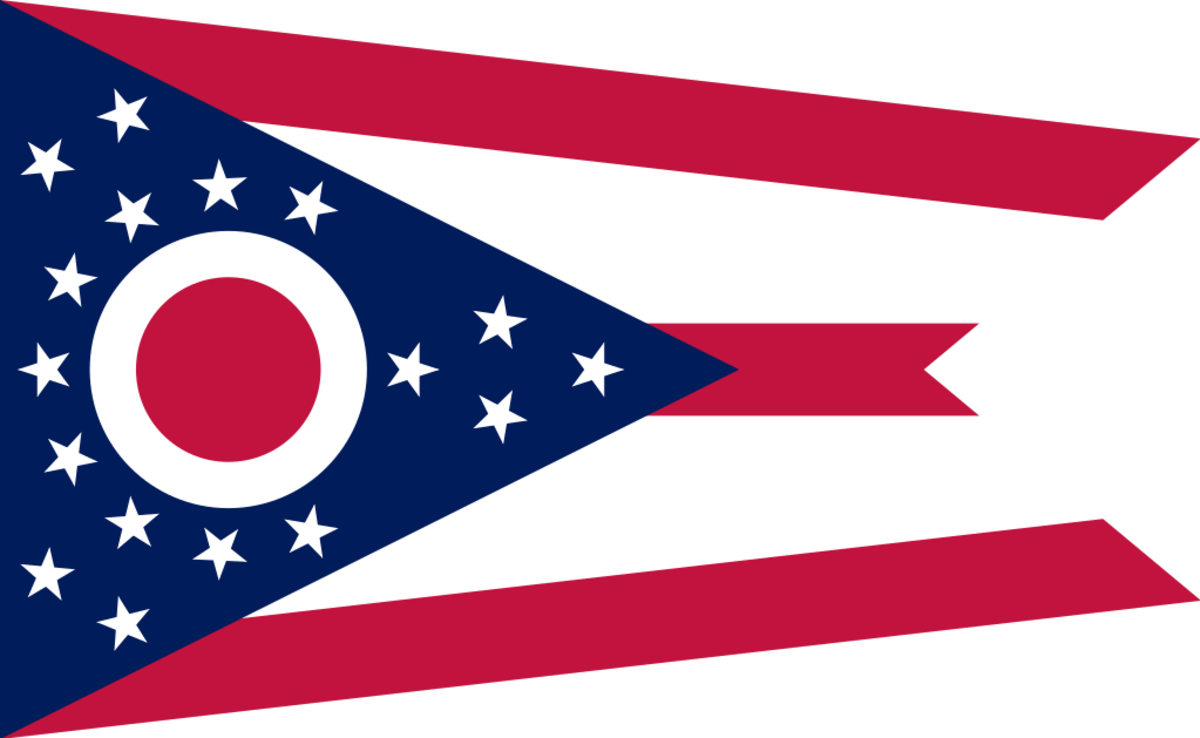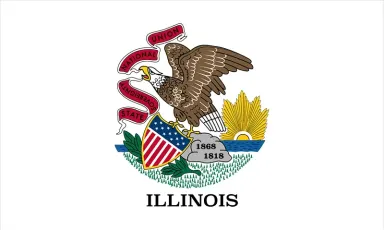Ohio Trucking Laws

Ohio is considered a trucker-friendly state, an ideal location for trucking companies and truck drivers. Its large ports provide easy access to the east coast while having routes to all points west and south. Suffice it to say that the trucking industry thrives and drives the state’s economy. To date, over 42,000 trucking companies are operating in Ohio, providing more than 364,800 industry jobs.
There is a sad reality, however, behind this rather encouraging fact for Ohioans—accidents involving trucks. According to the National Highway Traffic Safety Administration, “one out of eight traffic fatalities results from a collision involving a large truck.” The Federal Motor Carrier Safety Administration has ranked Ohio among the top 10 states where large truck collisions are rampant.
In 2022, the FMCSA reported 3,970 crashes in the Buckeye State involving large trucks. These mishaps resulted in 140 fatalities and 1,769 injuries. Although there was a significant drop from the previous year, many people still died or suffered injuries. Among the most common causes of trucking accidents are fatigue, poor vehicle maintenance, improper cargo loading, distracted driving, and alcohol.
Trucking collisions can be devastating and life-altering for victims and their families. Ohio citizens better be prepared and understand the regulations and laws governing the trucking industry so they will know how to assert their legal rights when involved in a truck accident.
Ohio Hours of Service Regulations
There are inherent dangers to driving while fatigued. This is why FMCSA established the hours of service rules for truck drivers, for their own safety, and that of other road users. The driver’s hours of service are detailed in the Truck Drivers Guide Book of the Ohio Department of Public Safety and the State Highway Patrol.
11-hour rule: A truck driver can drive for a maximum of 11 hours. Once they have spent 11 hours driving, they must stop for at least ten consecutive hours of off-duty rest. They can then start another 11-hour shift after complying with the required rest.
14-hour rule: While allowed to drive for only 11 hours, a truck driver is given 14 hours to complete these 11 hours. Even if they have yet to drive for 11 hours, they must stop at the 14th hour from when they started their shift.
30-minute break rule: A driver must take a 30-minute break after eight hours on the road.
60-hour/seven-day rule: A trucking company that does not put its vehicle on the road every day of the week must only allow its driver to operate a truck for 60 hours within seven days.
70-hour/eight-day rule: A trucking company putting its vehicle on the road every day of the week may allow its driver to operate a truck for 70 hours within any given eight successive days.
Ohio Inspection, Repair, and Maintenance Regulations
The ODPS requires utmost compliance with FMCSA regulations by trucking companies and drivers.
The general requirements set forth by the FMCSA include the following:
Motor carriers must conduct systematic and routine inspection, repair, and maintenance of all trucks or commercial motor vehicles (CMV).
All parts and accessories of trucks must be in safe working condition.
Drivers must inspect all CMVs they operate daily (pre-trip and post-trip).
CMVs must pass annual inspections performed by a certified inspector.
A maintenance file containing all records of inspection, repair, and maintenance of each CMV following the requirements of the FMCSA must be maintained and open for inquiry by officials.
Working safety devices and operating braking systems, including breakaway and emergency braking for each CMV, are also requisites.
Ohio Load Securement Rules and Regulations
Loads or cargoes of trucks entail risks and are hazards on the road, which is why load or cargo securement is important to keep everyone safe. Unsecured loads may lead to injury, death, or significant property damage during the transport or unloading of goods if an accident occurs.
The FMCSA has cargo securement rules and regulations in place. Cargo must be properly distributed, firmly immobilized, and adequately secured on or within a vehicle by structures of ample strength, dunnage or dunnage bags, shoring bars, tiedowns, or a combination of those mentioned earlier. Articles of cargo must be firmly held by chocks, wedges, a cradle, or other equivalent means to prevent them from rolling. They must also be placed and secured by tiedowns to prevent them from falling off while in transit.
Ohio Distracted Driving Laws
On April 4, 2023, the state implemented the Ohio Revised Code for distracted driving, which applies to all operators of motor vehicles, including truck operators. It is illegal to use or hold a cell phone or electronic device in one’s hand, lap, or other parts of the body while driving on Ohio roads. Officers can pull over drivers and vehicles if they see a violation. Drivers can make or receive calls via hands-free devices like speakerphones, earpieces, wireless headsets, or electronic watches.
The new law allows drivers to use their mobile device’s Bluetooth technology and integrated systems within the vehicle but only to make or receive calls. They cannot, however, hold and manipulate their phones.
Drivers under 18 are restricted from using a device in any way, including its hands-free features.
Ohio Drunk Driving Laws
Operating a vehicle while impaired or under the influence has dire consequences for Ohio truck drivers—they can get their CDL revoked, face jail time, and lose the privilege to work in the industry.
Essential provisions in Ohio drunk driving laws that commercial drivers should note include:
Lower BAC limits - The legal limit for a commercial driver's blood alcohol level is 0.04, lower than the limit for other drivers over 21 who drive non-commercial vehicles (0.08).
Personal vehicles - Commercial drivers can lose their license even if they own the commercial vehicle they are driving and even if they were not working at the time of the offense.
The risk of termination - If convicted, drivers can have their CDL suspended or get penalized with permanent termination of their right to drive a commercial vehicle.
An OVI is a first-degree misdemeanor. Refusal to submit to BAC testing can lead to additional sanctions.
Ohio Commercial Trucking Insurance Requirements
It is paramount for trucking companies in Ohio to have the right insurance coverage to shield their businesses from substantial financial losses if their drivers and trucks get involved in an accident. The state government looks after the welfare of potential victims; for this reason, it demands specific insurance requirements for commercial trucks. Failure to comply can result in heavy fines and legal issues.
All commercial trucks must have liability insurance with a minimum coverage of $750,000 for bodily injury or death per accident, $750,000 for property damage per accident, and $5,000 for cargo insurance. These are just the minimum requirements, and each vehicle may need additional coverage depending on the type of cargo it is carrying or the size of the trucking business. Companies are advised to consider adding collision coverage to further protect and cover all parties involved in the event of an accident.
Ohio Is an At-fault State for Insurance Claims
Ohio follows the tort or at-fault insurance system. It states that in a road accident, the driver considered at fault will be responsible for any losses and damages caused by the mishap. These may include vehicle damage, medical bills, lost wages, pain and suffering, and mental anguish. The insurance carrier of the at-fault driver and the company they work for will be liable for paying damages to the victims.
Knowing and establishing who is at fault in an accident is crucial in any case involving insurance companies and multiple parties. Individuals filing claims must gather solid evidence to strengthen their lawsuits against liable parties and ensure rightful compensation.
A personal injury attorney knowledgeable of Ohio insurance laws and adept at handling accidents and dealing with insurance companies can investigate one’s case and, more importantly, determine who is at fault.
Ohio Is a Comparative Negligence State for Commercial Trucking Accident Lawsuits
Parties involved in a motor vehicle accident in Ohio can share fault for the unfortunate incident. The Buckeye State follows the comparative negligence law, which states that an injured party has the right to seek compensation for injuries sustained even if they are partially responsible for the accident. However, a victim's own negligence and involvement in the collision reduce the damages they are seeking.
For example, if the driver of a car involved in a truck accident is 20 percent liable for the collision and suffers $10,000 in damages, they will only be able to collect $8,000 of that total amount. But if they are at least 51 percent liable for the accident, they will not be entitled to recover any compensation.
Ohio may award victims economic and noneconomic damages in truck accident cases. Economic damages are tangible losses that come with a price (medical bills, property damage, lost wages, etc.). On the other hand, noneconomic damages refer to losses that do not have a clear monetary value (pain and suffering, loss of consortium, etc.).
If a party is killed in a truck accident, surviving family members can file a wrongful death lawsuit to recover damages related to the loss.
How Much Can Someone Sue for a Truck Accident in Ohio State?
No absolute number gives a valuation of the damages incurred in a truck accident. It is also impossible to come up with an average settlement. Similar accidents will occur, but disparities will lead to different claim values. A victim who has suffered severe injuries may know how much his claim is worth. Still, insurance companies will undoubtedly offer them significantly less than they hope to receive.
Several factors determine the truck accident settlement a victim can receive. The gravity of the injuries is the deciding factor. For example, someone who suffered mild whiplash and back pains will not be awarded the same compensation as someone who sustained damage to the spine that required surgery and lengthy rehabilitation. Other factors include the kind of treatment sought for the injury and whether it is necessary, the length of treatment, the expenses incurred, and the injury’s long-term effect on the victim.
Ohio Statute of Limitations for Truck Accident Lawsuits
The state’s statute of limitations, the time limit on filing a truck accident injury claim, is two years. It starts from the date of the accident, and any time after the accident and before the two-year period lapses, an accident victim can file a personal injury claim. If two years pass and the victim fails to pursue a claim, they will waive or lose their right to seek compensation for losses.
There are certain exceptions to the rule. The statute of limitations for a minor gets an extension—two years beginning from their 18th birthday, not from the date of the injury. For example, a 15-year-old girl injured in an accident has until two years after her 18th birthday to bring a claim, giving her five years to pursue damages.
Another exception is the “discovery of harm” rule. Suppose a victim does not realize an injury until some time after the injury happened. In that case, the statute of limitations begins when the injury is uncovered and ascertained, not when it occurs.
If you are a plaintiff planning to file a truck accident injury claim, you are advised to consult an attorney as soon as possible to understand your options and file your case properly. Taking immediate action ensures that your claim is valid and can be pursued in a court of law. Waiting until the statute of limitations has passed could mean losing your chance for justice and compensation for your injuries.
Legal Resources for Ohio Trucking Accident Victims
Ohio State Bar Association
The Ohio State Bar Association partners with the Ohio Public Defender Commission and the Ohio Access to Justice Foundation to help those who cannot afford to pay for legal services. The organization also recognizes the glaring gap in access to justice in rural communities, where there is a lack of practicing attorneys. Financial support comes from the Ohio State Bar Foundation, the largest bar foundation in the United States.
Ohio Legal Help
Ohio Legal Help is a nonprofit organization launched in 2019 to help Ohioans gain access to the civil justice system. It leverages technology and innovation to bring justice to all. The organization presents legal matters in plain language for everyone to understand easily. It also provides self-help tools and connections to local legal and community resources.
Ohio Department of Public Safety
If you need the crash report of your truck accident in Ohio, you may go to the Ohio Department of Public Safety Crash Retrieval System website to secure a copy. Reports can be searched by crash number, document number, or advanced search options such as by date and investigating agency.
Ohio State Highway Patrol
The Ohio State Highway Patrol is primarily responsible for enforcing traffic rules and regulations in the state. Its patrollers can also be first responders in case of an accident. They can be reached at #677 or (614) 466-2660 for assistance.
Ohio Bureau of Motor Vehicles
The Ohio BMV oversees motor vehicle licensing and driver registration across the state. Its website offers access to various online services, enabling you to view your driving records, renew your registration, obtain federally compliant IDs and licenses, and gather relevant manuals and documents, among other services. The website also has a comprehensive list of BMV forms sorted by topic, number, and name.
Ohio Trucking Association
Serving as the “Voice of the Industry,” The Ohio Trucking Association comprises truck companies and professionals aiming to help trucking industry members operate efficiently and profitably. Through its Team 88 or the Legislative Committee, this organization provides its members with a platform to raise their issues to legislators and guide them in policymaking. It also offers industry news and updates, networks with quality trainers to bridge business connections, and assists with cost-saving programs to help trucking businesses thrive.
Truck Drivers Guide Book
The Truck Drivers Guide Book of the Ohio State Highway Patrol provides comprehensive information on the applicable laws and regulations governing the trucking industry. Companies must follow and comply with these rules to keep operating in the state.
About the Author
Charles M. Rittgers is a certified member of the Multi Million Dollar Advocates Forum, one of the most prestigious groups of trial lawyers in the United States, and has appeared on national and local television shows and radio broadcasts.
Expertise.com StaffAuthor
Step into the world of Expertise.com, your go-to hub for credible insights. We don't take accuracy lightly around here. Our squad of expert reviewers, each a maestro in their field, has given the green light to every single article you'll find. From rigorous fact-checking to meticulous evaluations of service providers, we've got it all covered. So feel free to dive in and explore. The information you'll uncover has been stamped with the seal of approval by our top-notch experts.

Charles M. RittgersReviewer
Charles M. Rittgers is a trial lawyer with a record of success in personal injury, wrongful death, and criminal defense cases. Charlie is a certified member of the Multi Million Dollar Advocates Forum, one of the most prestigious groups of trial lawyers in the United States. As a result of his experience, Charlie has appeared on national and local television shows and radio broadcasts.




